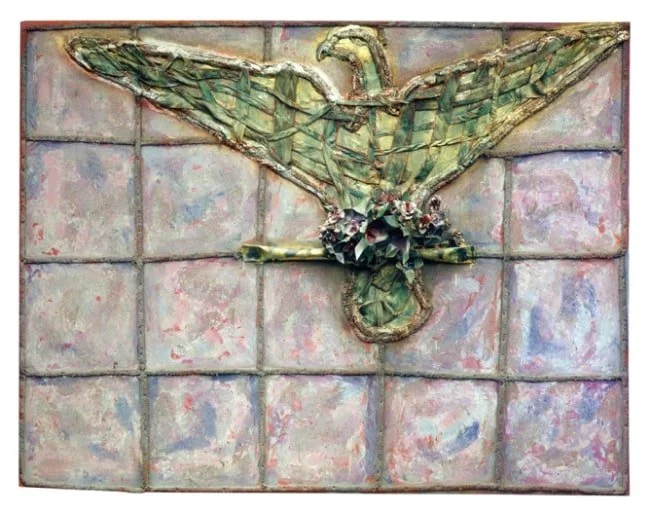VOLTA NEW YORK
Featuring work by Thornton Dial and Agatha Wojciechowsky
January 21 - 24, 2016
Metropolitan Pavilion
125 W 18th St, New York, NY 10011
Life on Mars is pleased to participate in the Outsider Art Fair with works by Thornton Dial and Agatha Wojciechowsky.
Thornton Dial (1928 - 2016) was born into a sharecropping family in rural Alabama, on the eve of the Great Depression. He experienced the trauma and tumult of both Jim Crow segregation and the civil rights movement. Profoundly influenced by Dr. Martin Luther King Jr., Dial used art to confront issues of racial oppression in the United States, developing an allegorical style that was abstracted but narrative, conveying concerns both personal and universal. His large, bold works, with incisive titles and themes of race and class, captivated the art world through sophisticated content and an aesthetic that defied stereotypes of “folk.” Dial bridged the worlds of Black vernacular self-taught artists and the contemporary mainstream. He was a conduit between nineteenth-century-born artists like Bill Traylor; African American quilters who had, for too long, gone unrecognized as artists; and a younger generation of Black creatives seeking a way forward. Dial lived to see his work acquired by some of the most revered museums in the United States and became relevant to the mainstream art world in unprecedented ways. As the art world increasingly embraced him, Dial used his voice to raise serious questions about its long-standing hierarchies and inequities. He became emblematic of a shifting southern landscape in the late twentieth and early twenty-first centuries—as the deeply rooted vision of Black Americans revealed its tremendous power.
Agatha Wojciechowsky (1896 -1986) was recognized during her lifetime as a Surrealist. Although not following an art movement, her work reflected the sentiment of Art Informel of the 1950's. She had solo exhibitions from the 1960's to the present in New York, Cologne, Berlin, and Hamburg. Group exhibitions included shows with Man Ray, Marcel Duchamp, Jean Dubuffet, Isamu Noguchi, Francis Picabia, Romare Bearden. Her artwork can be found in numerous public collections including Museum of Modern Art, the Prado, the Menil Collection, the Art Institute of Chicago, and the Whitney Museum. Agatha lived her earlier years in Steinach de Saale, and then sailed to the United States in 1923 to be a German-speaking governess in a German baron's household. She married, became a US citizen and moved to New York City. A well-known Spiritualist medium, Agatha traveled internationally as a healer. In the early 1950's, without any background or training in the arts, Agatha began drawing. First, letters and automatic writing appeared, and then abstract drawings and faces. This is the work of different entities who take over and step into my body, directing my hand. I really have nothing to do with it. Agatha Wojciechowsky, along with many other artists of the post war era, was reaching for something timeless, in the spiritual realm. Her work is the expression of that quest.

